Summer sale discount off 50%! Shop Now
Currency
Why Hardware Matters: The Role of Polished Brass and Other Metals in Hermes Bag Design
- Home
- ReplicaX Blog | Style Guides and Insider Secrets
- Why Hardware Matters: The Role of Polished Brass and Other Metals in Hermes Bag Design
Why Hardware Matters: The Role of Polished Brass and Other Metals in Hermes Bag Design
Sep 18, 2025
By
Sophia Whitmore
0 comment(s)
Introduction: More Than Leather
When people think of Hermès, they picture supple leathers like Togo, Clemence, or Box calf. They imagine the timeless silhouettes of the Birkin, Kelly, and Constance, and they hear whispers about waitlists and auctions. But there’s another side to these icons that’s often overlooked, even though it defines the bag as much as the leather itself: the hardware.
Hardware is more than decoration. It’s the clasp that holds a Kelly closed, the padlock that swings from a Birkin handle, the oversized “H” buckle that announces a Constance. These pieces of polished brass and plated metal don’t just serve a function—they contribute to the identity, weight, and even the sound of every Hermès bag. Without hardware, a Birkin would feel incomplete, stripped of its personality.
This article explores why Hermès hardware matters, how it’s made, and what role it plays in the brand’s history, design philosophy, and collector culture.
The Silent Star: Hardware in Hermès Bags
Every Hermès bag tells a story through its leather, stitching, and silhouette. But hardware is the punctuation—the detail that locks in the narrative. Think about it: you can recognize a Kelly from across the room by its turn-lock clasp alone. The Constance “H” buckle doesn’t just fasten the flap; it embodies the bag’s entire design ethos.
This is what makes Hermès unique. In an era when many luxury houses plaster logos across their bags, Hermès relies on hardware as subtle branding. A padlock engraved “Hermès Paris” communicates heritage without shouting. Collectors often describe the hardware as the “jewelry” of the bag, a comparison that’s especially fitting given the quality of materials and craftsmanship involved.
Material Choices: Why Brass Matters
At the heart of Hermès hardware lies solid brass. Unlike cheaper alloys used by some brands, brass offers a perfect balance of strength, polishability, and weight. Hold a Birkin padlock in your hand—it feels heavy, reassuring, like a miniature work of sculpture. That weight is no accident.
Hermès then plates the brass with different metals, each chosen for its aesthetic and functional properties:
- Palladium plating: Silvery, modern, and highly resistant to tarnish. It gives bags a cooler, more contemporary edge.
- Gold plating: Warm and classic, available in yellow and rose tones. Gold hardware tends to feel more formal and is often paired with traditional leathers.
- Permabrass: A champagne-gold finish that sits between warm and cool, understated yet luxurious.
- Ruthenium plating: Dark, almost gunmetal in appearance, giving a sleek, masculine finish.
- Special editions: Occasionally Hermès experiments with solid silver, brushed titanium, or diamond-set clasps for limited releases.
Each finish alters the personality of the bag. A black Birkin with gold hardware feels traditional and formal. The same bag with palladium reads modern and versatile. Collectors know this: hardware isn’t just detail—it’s mood.
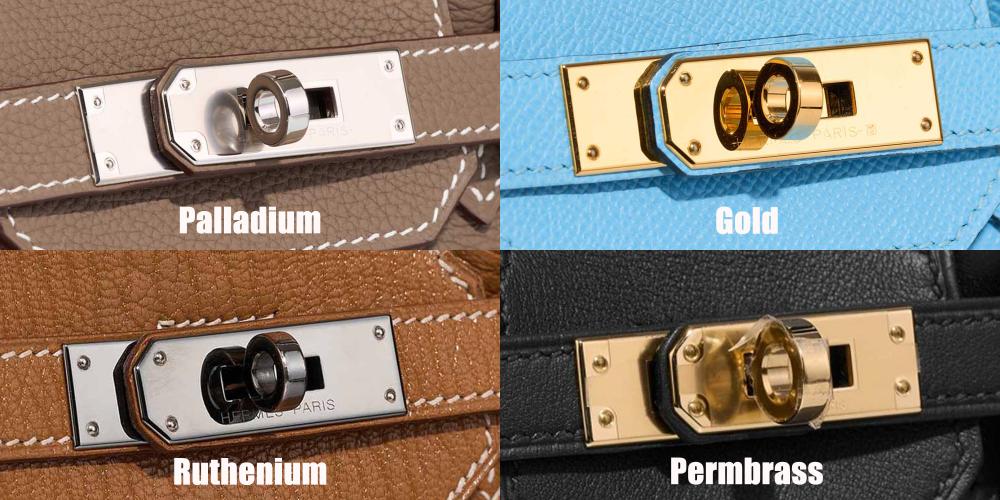
Craftsmanship: The Making of Hermès Hardware
Just as Hermès saddlers spend years mastering stitches, metalworkers devote their skills to perfecting hardware. Production involves multiple stages:
- Casting and shaping – Hardware begins as brass cast into rough forms. Some pieces, like turn-lock clasps, are cut with precision to allow mechanical movement.
- Hand-polishing – Before plating, artisans polish every surface. This is meticulous work, requiring hours for a mirror finish. The polish doesn’t just affect shine—it ensures smooth edges and prevents snags on delicate leathers or silk scarves.
- Plating – Using galvanic processes, the brass is coated in palladium, gold, or another finish. Thickness matters: too thin, and plating wears quickly; too thick, and detail is lost. Hermès strikes a balance, though collectors sometimes note subtle differences across decades.
- Assembly – A Birkin lock is made of multiple parts: body, shackle, and rotating mechanism. These are assembled with precision so the lock turns smoothly without sticking.
- Testing and quality control – Each clasp is tested for functionality. A Kelly turn-lock should rotate with the same satisfying resistance on bag after bag.
This level of care ensures consistency. An Hermès clasp isn’t just hardware—it’s an engineered object, built with the same philosophy that guides Swiss watchmaking.
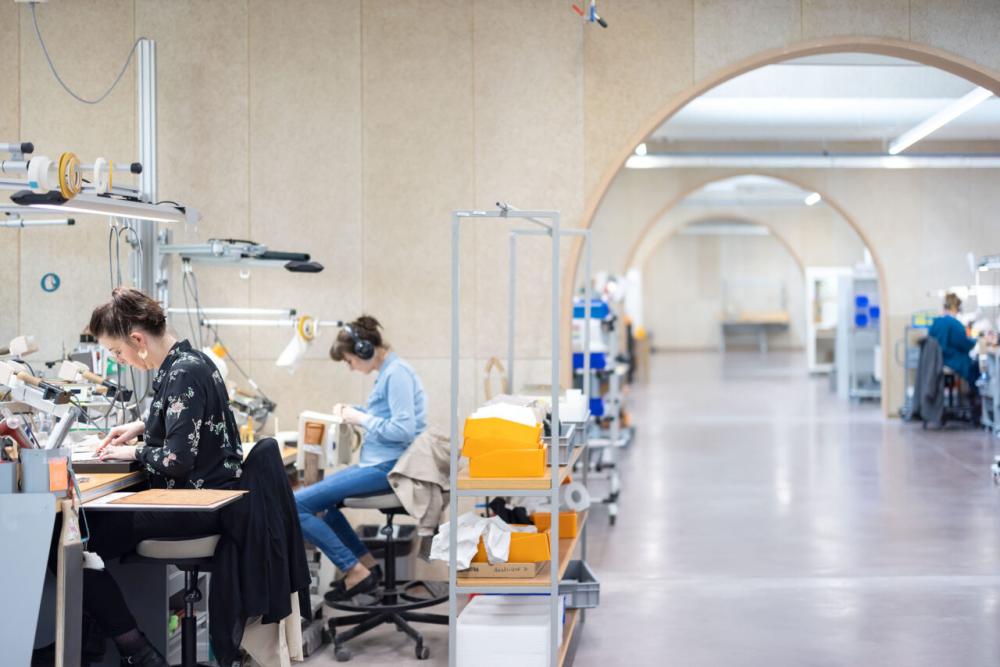
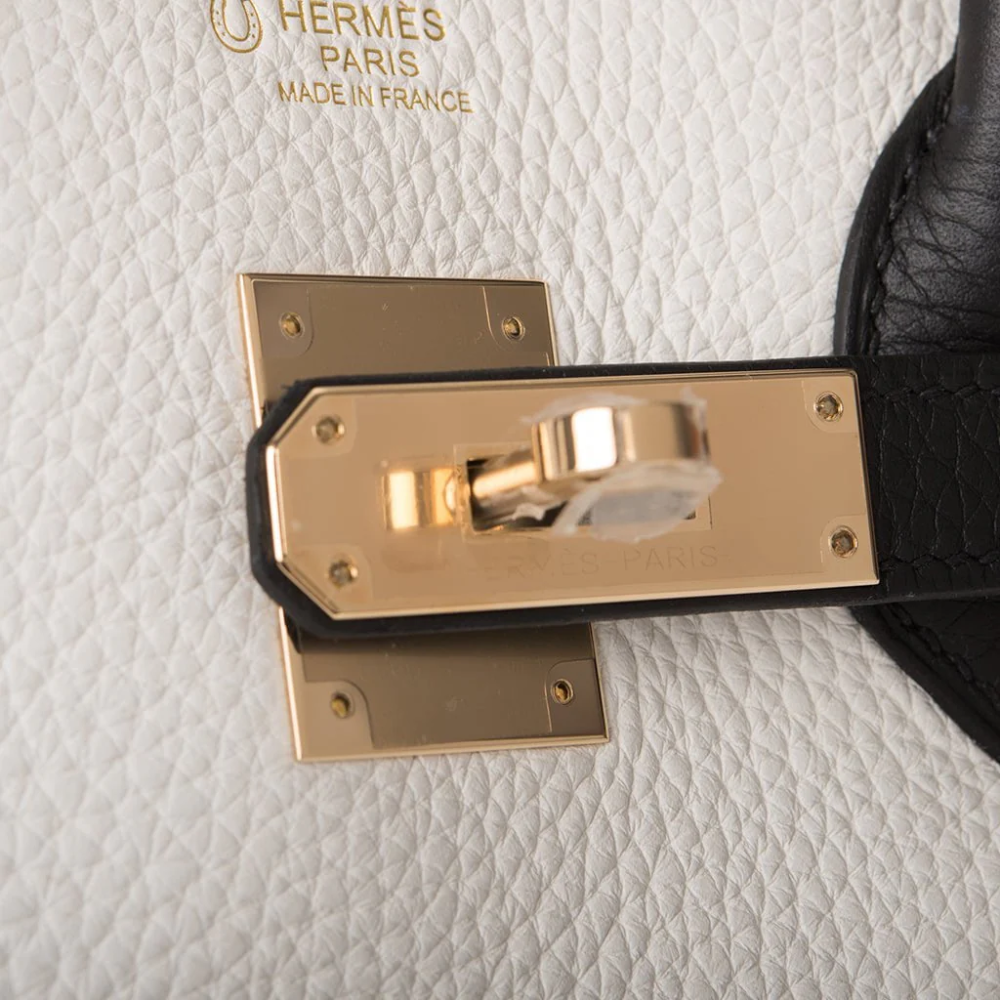
The Sound of Luxury
One of the most surprising but telling aspects of Hermès hardware is its sound. Owners often describe the click of a Kelly lock or the clink of a Birkin padlock as unmistakable.
Why does it sound different? Weight, density, and polish. Brass has a richer resonance than lighter alloys. The plating layers add subtle depth to the tone. Even the way the mechanism fits contributes to acoustics. Much like the reassuring thud of a luxury car door, Hermès hardware produces a sound that signals quality without words.
This sound is part of the multisensory Hermès experience—just as leather appeals to touch and smell, hardware appeals to hearing.
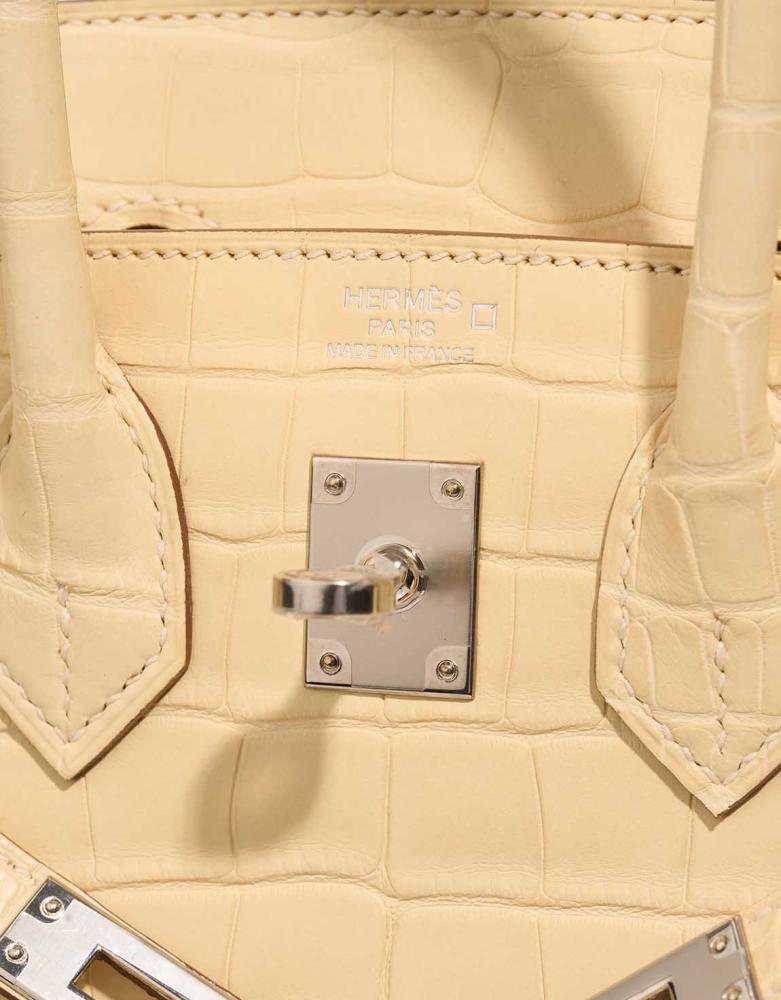
Function Meets Beauty
Hermès hardware is built with practical use in mind. Consider:
- The Kelly turn-lock was designed so the bag could be opened one-handed while riding (the Kelly’s ancestor was a saddlebag).
- The Birkin lock adds ritual as well as security, encouraging the owner to engage with the bag each time it’s used.
- The Constance “H” clasp doubles as both a fastening mechanism and a bold design feature.
- Even the metal feet at the bottom of Birkins and Kellys protect leather from wear when set down.
At Hermès, every functional requirement is turned into an aesthetic opportunity. The hardware is never hidden—it’s highlighted, polished, celebrated.
Variations Across Hermès Bags
Hardware differs depending on the bag:
- Birkin: Heavy padlock with keys in a clochette, plus metal feet. Its lock-and-strap closure is instantly recognizable.
- Kelly: Defined by its central turn-lock clasp and dual straps. The lock can be used, but often it’s left undone for a more relaxed look.
- Constance: Oversized “H” buckle dominates the design, embodying brand identity without a logo print.
- Evelyne: Minimalist clasps reflect its sporty origins.
- Special editions: Exotic skins with diamond-set clasps, brushed titanium finishes, or hardware in rare shades like graphite.
These variations allow collectors to express different moods. A Kelly with rose gold hardware radiates femininity, while a Birkin with ruthenium hardware feels edgy and urban.
Evolution of Hermès Hardware
Hardware has evolved subtly over the decades:
- Vintage era (pre-2000s) – Gold hardware had a deeper, warmer tone due to thicker plating.
- 2000s–2010s – Palladium gained dominance, suiting minimalist fashion trends.
- Recent years – Hermès introduced brushed finishes, rose gold, and even matte black, reflecting contemporary tastes.
Collectors often use hardware style to help authenticate bags. For example, older bags may show a slightly different font on engraved hardware compared to recent models.
Timeline of Hermès Hardware Innovations
To put this evolution into context, here’s a simplified timeline:
- 1950s–1960s – Kelly bag hardware sets the template: turn-lock clasp, padlock, and keys in clochette.
- 1970s – Permabrass finish introduced as a subtle alternative to yellow gold.
- 1984 – The Birkin debuts, featuring its now-iconic lock and key system.
- 1990s – Ruthenium plating makes its first appearance, giving bags a darker, modern look.
- Early 2000s – Palladium hardware becomes the dominant choice, aligning with minimalist aesthetics.
- 2010s – Rose gold hardware gains popularity, especially paired with pinks and neutrals.
- 2020s – Experiments with brushed metals, matte black finishes, and lightweight titanium hardware.
This timeline shows how Hermès evolves hardware slowly, with each change designed to expand options without diluting its DNA.
Hardware as Identity
Think of the Kelly clasp. Even rendered in silhouette, it’s instantly recognizable. The same goes for the Constance “H.” These pieces of metal aren’t afterthoughts—they’re brand DNA.
This is key to Hermès’ philosophy. Unlike other luxury houses that rely heavily on monograms, Hermès lets hardware do the talking. It’s subtle, confident, and timeless.
Maintenance and Care
Even the best plating benefits from care:
- Avoid water and perfumes: Chemicals and moisture can dull plating.
- Store locks carefully: Keys and locks should be kept in felt pouches to prevent scratches.
- Spa services: Hermès offers restoration, including hardware polishing or replacement, though over-polishing risks thinning plating.
Some collectors prefer to let hardware patina naturally, believing that the softened shine tells a story of use and age. Others want their clasps to remain gleaming. Both choices reflect personal philosophy.
Authentication Through Hardware: What Collectors Look For
One of the most reliable ways to authenticate an Hermès bag is by examining its hardware. While counterfeiters have become more sophisticated, hardware details remain notoriously difficult to replicate with accuracy. For buyers and collectors, these are the checkpoints:
1.Engravings
- Authentic Hermès hardware is engraved with “Hermès Paris”—never stamped or laser-etched crudely.
- On locks, the engraving is precise, centered, and evenly spaced.
- Counterfeits often reveal themselves through sloppy or shallow lettering.
2.Screws
- Older Hermès bags often used slotted screws, while modern ones may feature Phillips head screws.
- Authentic screws are always aligned cleanly and flush with the surface. Misaligned or cheap screws are a red flag.
3. Weight
- Genuine hardware has heft due to its solid brass core. A Birkin lock should feel heavy, not hollow.
4. Plating Quality
- Authentic plating is smooth and consistent. It may wear with age but won’t bubble or peel.
5. Clochette and Keys
- Keys are engraved with numbers that match the lock.
- They should feel solid, with crisp edges.
6. Turn-Lock and Padlock Mechanism
- A Kelly turn-lock should rotate with smooth resistance.
- A Birkin padlock should turn easily but never feel loose.
7. Sound Test
- Authentic hardware produces a distinct click or clink. Many seasoned collectors say their ears can tell a real Hermès bag.
For collectors, learning to read hardware is as crucial as understanding leathers or date stamps. As many put it: the hardware tells the truth when the leather can’t.
For more authentication tips, please refer to A Guide to Hermes Leathers.
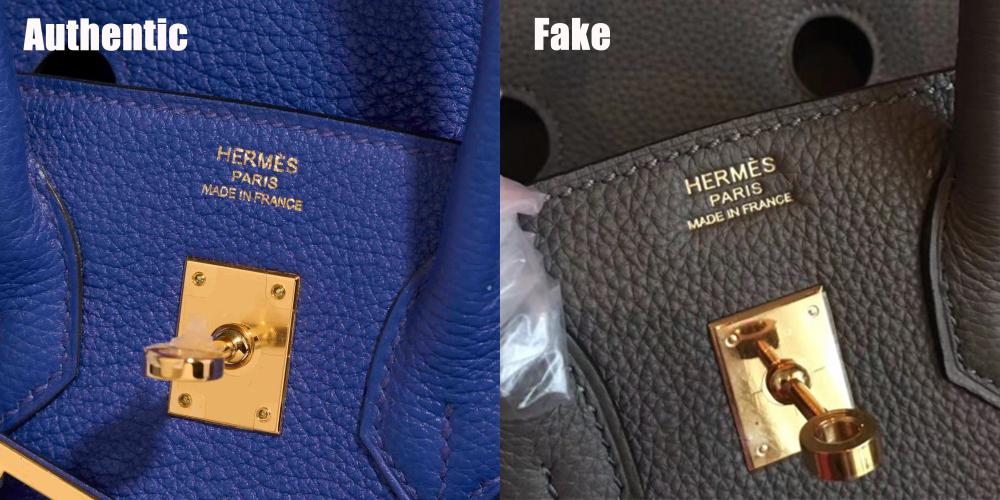
The Future of Hermès Hardware
Hermès continues to innovate quietly. Sustainability is increasingly important: plating methods are refined to reduce waste and environmental impact. New materials like titanium offer lighter weight while maintaining durability. Limited editions push boundaries with precious stones and unusual finishes.
Yet through all this, Hermès stays true to its principle: hardware must always enhance function while elevating beauty. The clasp, lock, or buckle is never just an accessory—it’s part of the bag’s soul.
Conclusion: Why Hardware Matters
Leather may dominate the conversation about Hermès, but hardware is what completes the story. It gives the bag its voice, its weight, its jewelry-like sparkle. It embodies the house’s philosophy: nothing is too small to be perfected.
From the warm glow of polished brass to the cool precision of palladium, Hermès hardware shows that detail is destiny. Each clasp and lock tells a story of heritage, craftsmanship, and enduring design.
The next time you see—or hear—a Kelly clasp close, remember: it’s not just metal. It’s Hermès, distilled into sound and shine.
Further reading: The Future of Sustainable Materials.
Recent Posts